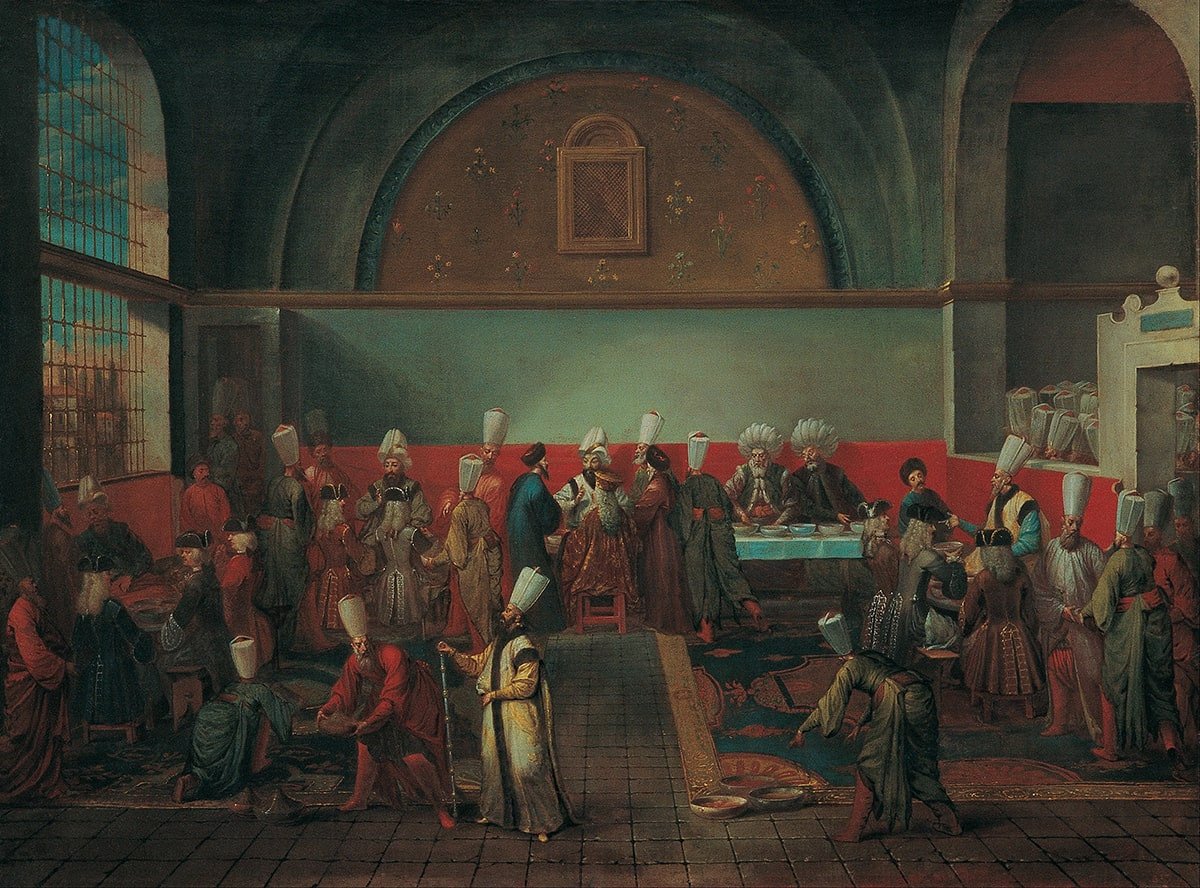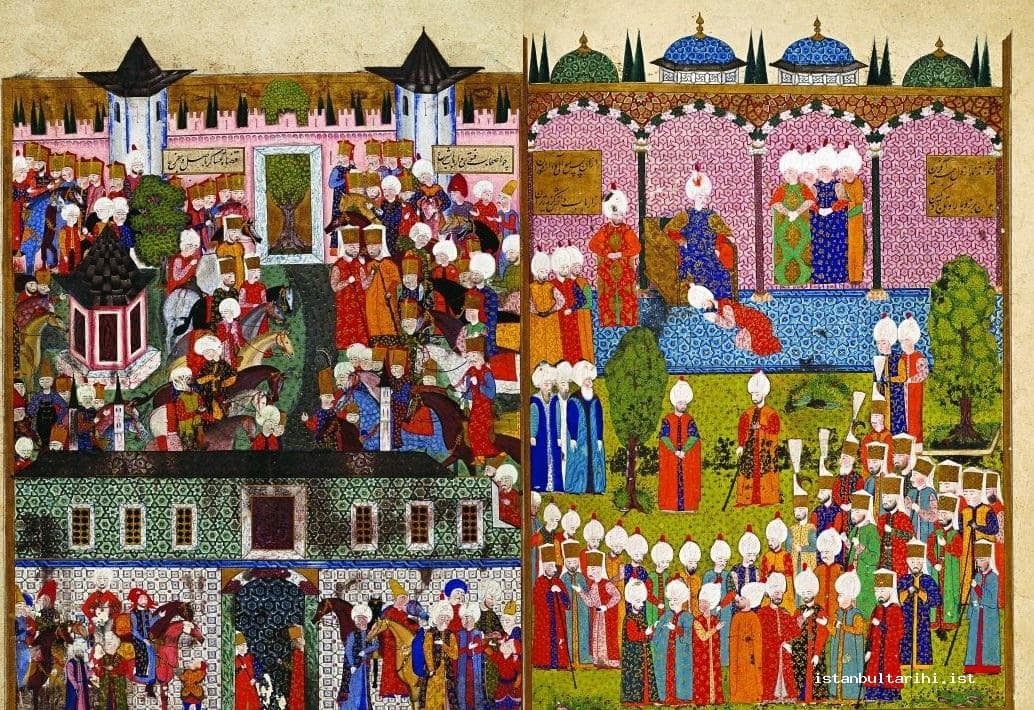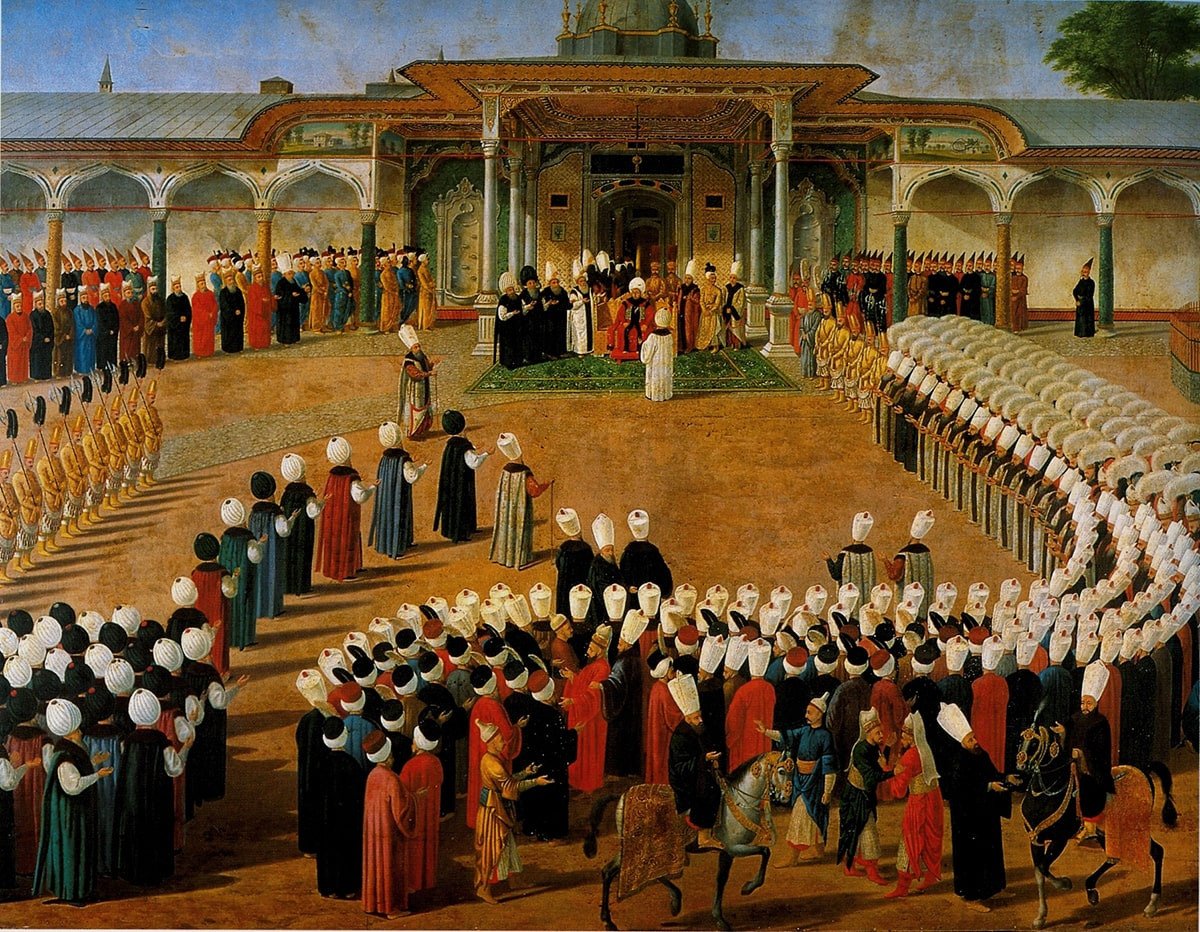The Topkapi Palace had been the house of sultans, the residence of the Ottoman royal family, and their governmental offices for nearly four centuries. Following the conquest of the city in 1453, the Ottomans first built a modest and simple palace towards the middle of the walled city, near which today stands Istanbul University and Süleymaniye Mosque. As you will notice toward the end of this tour, however, the views offered by this palace make it clear that this location was meant to be the royal seat.
The Ottoman Empire lasted more than six centuries, from the beginning of the 1300s to 1922. It was ruled by 36 sultans of the same bloodline. For 380 years, 24 of these monarchs lived in and ruled from this palace. The first version of this palace dates back to the 15th century. Sultan Mehmed II, the conqueror of Constantinople, first moved into the palace in the 1470s shortly after having it constructed.

Since then, there had been major additions and changes during the times of several sultans. The most extensive ones are after 1520s when the Suleyman (also known as” the Magnificent”) era was re-shaping the empire as well. Like the Divan Chamber as a most essential part of the political corners of the palace. Towards the end of the same 6th century, the famous architect Sinan was designing the imperial kitchens that cover an entire flank of the 2nd courtyard.
The terraces with unmatched views at the end of the palace represent two different eras. The one looking the Golden Horn is from the Sultan Murad IV’s reign in 17th century while the other side rising over Bosphorus signifies the modern times as they are from mid-9th century.

In addition to these, there had been reconstructions as well. Like the renowned portal gate of the Topkapi Palace “Bab-üs-Saade” (Gate of Greetings). The original gate was heavily damaged by an earthquake in late 18th century and reconstructed at once with the original plan.
When the new and modern Dolmabahce Palace opened in the 1850s, it slowly started becoming the new ancestral seat and house of collections. That much-newer palace is renowned for its apparent modern and European style. Meanwhile, Topkapi Palace has always been considered the original and authentic royal stage in Istanbul. As every experienced cultural traveler knows or would expect, this entire palace complex is a UNESCO World Heritage Site and this has been the case since 1985.
Topkapi Palace was named by the residents of Istanbul in the 18th century. Its name literally means “cannon gate,” because a coastal gate that was once embedded in the palace walls had had cannons at its sides. In a broader sense, according to the local political culture of the Ottomans, the power of a house or office was often symbolized by its gates. As you will clearly see throughout the palace, the portal gates that lead into the courtyards represent this grandiosity. They were designed to impress any outsider coming in and to give an accurate idea of what awaits beyond.

The palace was built on an area of approximately 700,000 square meters, the majority of which is comprised of gardens surrounded by rooms and halls behind their colonnades. At the same time, a straight line from the first gate to the ending terrace of the palace measures approximately only 1,000 meters. The palace complex had consisted of two parts for housing its inhabitants. These two parts, called the “outer palace” and “inner palace,” were separated by the sultan’s ceremonial gate, the Gate of Felicity. In addition to these outer and inner courts, the Harem section served as the living quarters of the sultan’s family. Records help us estimate that the population of the palace in the 17th century was between four and five thousand residents.